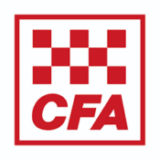Remote Automated Weather Station (RAWS)
Get exceptionally accurate wildfire weather data. Our Remote Automated Weather Stations are trusted in some of the world’s harshest locations.
Did you know Australia is the most fire-prone country on Earth? What’s more, Victoria is one of Australia’s more populated and fire-prone states, and its risk is growing. Across six geographic regions studied in Victoria, the amount of land burned between 2001-2020 was 365% greater than the amount burned between 1981-2000.
To help manage the risk, the Country Fire Authority (CFA) was established in 1945. Its mission is to protect the lives and property of the people of Victoria by supporting and coordinating fire prevention, preparedness, and response efforts throughout the state.
| MEET ESS EARTH SCIENCES | |
 |
For over 30 years, ESS Earth Sciences. has been developing and curating technologies to support the environmental monitoring needs of Australia’s university and government scientific organizations, water resource authorities, and the private sector. ESS fills out their portfolio of fire weather monitoring solutions by curating products from AEM and our FTS brand. |


It has been great working with ESS to facilitate upgrade and enhancement of our network of fixed and portable weather stations across Victoria. This will be invaluable for helping provide better observations of fire weather to inform firefighting operations and community warnings. The FTS stations are high-quality and user-friendly stations, being particularly easy to transport, deploy and demobilize…Additionally, the use of soil and fuel moisture sensors on some stations has provided an invaluable source of objective data for helping improve some key gaps in our fire behaviour models relating to fuel availability and forest flammability.
Organizations like the CFA face a daunting set of challenges. Managing wildfire risk requires the ability to anticipate how fire will behave under various conditions and the ongoing monitoring of those conditions. Key concerns include:
Fire behavior is exceedingly difficult to predict. It is determined by the complex interplays between many different atmospheric, chemical, physical, and biological mechanisms – which we understand only partially.
Microclimates within just a few kilometers of each other can vary wildly in their climatology. As a result, it is exceedingly difficult to capture ground-level weather observations everywhere they are needed.
Prescribed burns are important tools for preventing catastrophic, high-intensity wildfires. But prescribed burns can sometimes get out of control and spark the very wildfires we want to avoid.
To address its challenges, the CFA turned to our partner, ESS. In this case, ESS helped the CFA expand its fire weather monitoring capabilities with both fixed and portable (aka quick-deploy) versions of our Remote Automated Weather Stations (RAWS). Here’s how the stations are making a difference:
The CFA is using the stations to collect data on soil moisture at multiple depths, so they can better understand seasonal changes in fuel moisture content. This is helping them better anticipate and prepare for seasonal changes in fire behavior.
Every new weather station provides an opportunity to fill critical gaps in Australia’s ground-level weather monitoring network. The latest additions are no exception.
Our Quick-Deploy RAWS enables the CFA to keep the risk of prescribed burns to a minimum by closely monitoring local weather conditions over the period leading up to and including the burn.